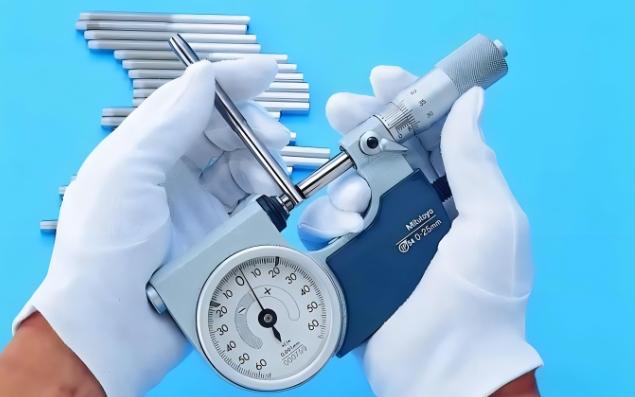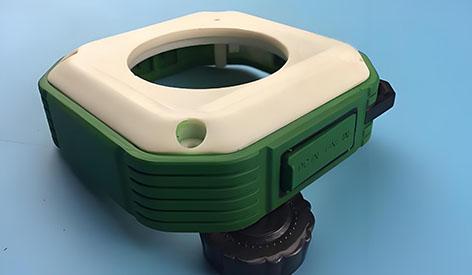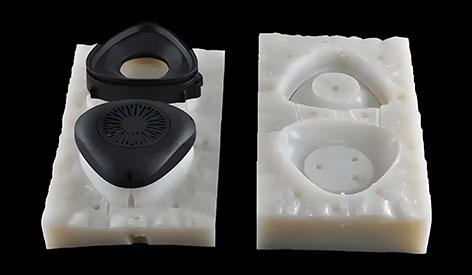In the field of industrial-grade additive manufacturing, nylon fiberglass composites are like a “performance magician”, combining the toughness of polymers with the rigidity of inorganic reinforcing phases. Among the many formula ratios, 30% glass fiber content in 3D-printed materials has become the industry’s recognized gold standard – this is not a fortuitous choice, but a precise balance of material science, process limitations, and application needs. In this article, we will analyze the scientific logic behind this magical ratio to help you make the best decisions in Rapid Prototyping and End-Use Part Production.

I. 30% Glass Fiber for D Printing: The Mystery of the “Sweet Spot” of Additive Manufacturing Materials
1. Critical inflection point of mechanical properties
Experimental data clearly reveals: when the glass fiber content increases from 0% to 30%, the tensile modulus of nylon composite material realizes a leaping leap (from 1602 MPa to 3500-7800 MPa), and the bending strength is raised from 46.3 MPa to 68 MPa, while the heat distortion temperature rises from 146°C to 160°C.5 However, once it exceeds 35%, the performance curve is steeply reversed:
Toughness falls off a cliff: the notched impact strength of the 40% glass fiber sample drops below 4.13 kJ/m², and the fracture behavior shifts from ductile to brittle
Printing feasibility deteriorates: excess glass fibers lead to a decrease in powder flow, impaired homogeneity of the SLS layup, and a reduction in the strength of the interlayer bonding
2. The scientific nature of the interface effect
The core value of the 30% ratio is to maximize the glass fiber-nylon interface while avoiding defects:
Ideal infiltration conditions: each 7-15μm diameter short-cut glass fiber is fully wrapped by the nylon matrix, forming a stress transfer channel
Agglomeration inhibition threshold: over 35% content, the glass fiber due to electrostatic adsorption is prone to form clusters, which become a source of cracks
Thermal Expansion Coefficient Matching: 30% filler makes the composite material CTE close to that of metal, which makes the composite material suitable for the manufacture of insert molding components
Case study: Bosch Germany found that in the prototype testing of turbocharger wind wheel, it is possible to achieve the maximum interfacing strength and avoid defects at the same time. Case in point: Bosch in Germany in the turbocharger wind turbine prototype testing found that 35% of the fiberglass samples in 150,000 rpm speed of collapse, while 30% of the samples through the 500,000 rpm endurance test

II.Performance Showdown: Mapping the Disruptive Advantages of Glass Fiber Reinforced Nylon
1. The High Temperature Battlefield: A Dimensional Leap in Thermal Performance
Heat Deflection Temperature (HDT): 160°C vs. 146°C for pure nylon (9.6% improvement)5
Long-term heat resistance: 1000 hours of continuous operation at 130°C with strength retention >85%
Thermal Creep Resistance: 30% of glass fibers reduces 100 hours creep to 1/3 of pure nylon
2. Mechanical arena: a revolution in strength and stiffness
| Performance indicators | Pure nylon PA12 | 30% Glass Fiber Nylon | Enhancement |
|---|---|---|---|
| bending modulus | 1,300 MPa | 2,415 MPa | 85.8% |
| tensile strength | 46 MPa | 44 MPa | -4.3% |
| Elongation at break | 3.6% | 5.0% | 38.9% |
| abrasion resistance | moderate | Superior (3x improvement)) | 200%+ |
Note: Data derived from MetaMotion Materials Lab accelerated aging tests
A word of caution: the slight decrease in tensile strength reveals an anisotropic trap – the Z-axis strength may be 20-30% lower than that of the XY plane, which poses a new challenge to the design of load-bearing structures.
III. Practical Guide: Precise Application Scenarios of 30% Glass Fiber Nylon
1. Disruptive applications in automotive field
Engine compartment heat-resistant parts: turbocharging piping bracket (temperature resistance >140°C), sensor housings
Functional verification prototypes: transmission forks, clutch actuator (passed bench test)
Case: Tesla’s battery cooling ducts printed with 30% glass fiber nylon SLS, reduced weight by 40% and passed DVPR verification
2. Core components for industrial equipment
Highly rigid structures: robotic arm end-effector, automated production line fixtures (stiffness comparable to aluminum alloy)
Wear-resistant moving parts: conveyor links, bearing cages (life expectancy up to a million cycles)
Case: Siemens gas turbine service tool made of this material, with improved temperature resistance increasing maintenance efficiency by 3 times2
3. Quality breakthroughs in consumer electronics
High-end shell: drone body, professional camera handle (50% increase in drop resistance)
Precision structure: AR glasses hinge, folding screen phone bracket (0.1mm thin-wall design feasible)
Failure warning: MetaMotion analysis shows that if UV stabilizers are not added to the shell of a drone for outdoor use, 30% of the fiberglass nylon parts will yellow ΔE>5 after 6 months, and the surface roughness Ra increases by 0.8μm
IV.Cracking the process pain points: 30% glass fiber nylon printing essentials
1. The golden match between equipment and material
SLS equipment requirements: Formlabs Fuse 1+ 30W and other models are equipped with a 30W fiber laser, which can penetrate the glass fiber to achieve deep sintering
Powder particle size control: the length of the glass fiber needs to be ≤ 0.5mm, the powder D50 particle size of 50 ± 5μm (too coarse to lead to defects in the powder spreading)
Nitrogen protection is necessary: the oxygen content of <0.5% can prevent the oxidation of the glass fiber interface to improve the strength of the interlayer 15%.
2.Parameter tuning code (PA12 + 30% GF as an example)
SLS Process Optimization Parameter Table
| parameter term | Pure nylon PA12 | 30% Glass Fiber Nylon | Adjustment logic |
|---|---|---|---|
| laser power | 20W | 24-26W | Compensates for glass fiber heat absorption |
| scanning speed | 3000mm/s | 2500mm/s | Extended melting time |
| preheating temperature | 165°C | 172-175°C | Suppression of warpage deformation |
| layer thickness | 0.12mm | 0.10mm | Enhancement of Z-direction strength |
| Powder Refresh Rate | 50% | 70% | Ensuring liquidity |
3. Post-treatment key technologies
Sandblasting Reinforcement: 80 mesh glass beads treated at 0.3MPa pressure to increase fatigue strength by 20%
Infiltration Sealing: MetaMotion develops nanoscale epoxy penetrant to address dimensional drift caused by moisture absorption
Coating Protection: PVD Aluminum plating blocks UV rays and extends the life of outdoor parts up to 5+ years

V. Breaking Boundaries: The Future Evolution of 30% Glass Fiber Nylon
1. New era of interface engineering
Plasma grafting technology: generate amino functional group on the surface of glass fiber, react with carboxyl group at the end of nylon to form a chemical bond7
Nano-bridging agent: carbon nanotubes build a “molecular bridge” between the glass fiber and nylon, and the impact strength is increased by 40%.
2. Intelligent Sensing Composites
Functional integration breakthrough: Evonik develops conductive fiberglass, printing parts with both structural strength and current overload protection
Self-diagnostic structure: implantation of piezoelectric ceramic-coated fiberglass enables early warning of cracks in the part.
3. Sustainability Revolution
Recycled Glass Fiber Application: MetaMotion and Saint-Gobain collaborated to launch an environmentally friendly grade containing 40% recycled glass fiber, reducing carbon emissions by 35% Bio-based Nylon Upgrade: Castor oil-based PA11 + 30% glass fiber, combining high performance with degradability.
Conclusion: Standing at a turning point in materials evolution
The dominance of 30% glass fiber reinforced nylon in 3D printing is the culmination of two decades of collaborative innovation between materials scientists and engineers. It’s like precision Swiss watchmaking – each component does its job on a microscopic scale, with the glass fiber providing a rigid skeleton, the nylon matrix transmitting stress, and the interfacial phase resolving deformation conflicts. When Formlabs and other equipment vendors to reduce the cost of SLS printing to 1/5 of a decade ago, when the MetaMotion materials library can provide 20 kinds of modified fiberglass nylon grades, the manufacturing industry is ushering in the eve of the outbreak of fully digital manufacturing of functional components.
In the smart factory of the future, glass fiber reinforced impellers with sensors will autonomously report stress concentration points during sintering and molding; self-repairing nano-coated engine mounts will automatically heal after encountering scratches; and all of this starts from your deep understanding of the 30% magic ratio today. Those who master the nature of materials will define the future of manufacturing.





